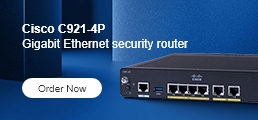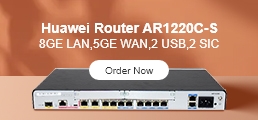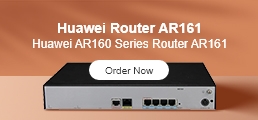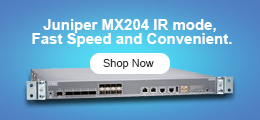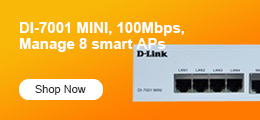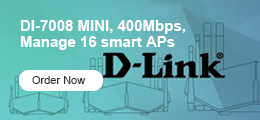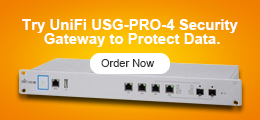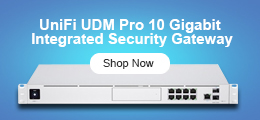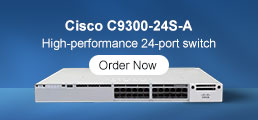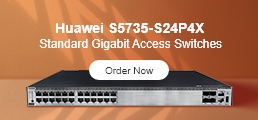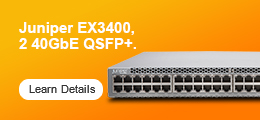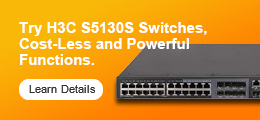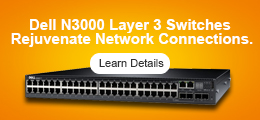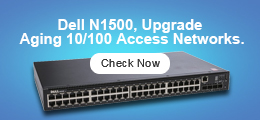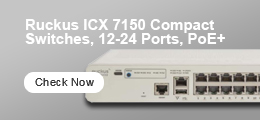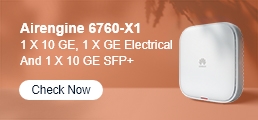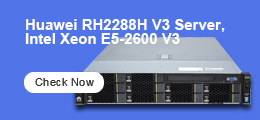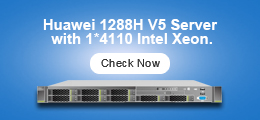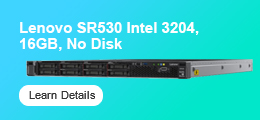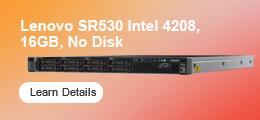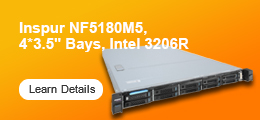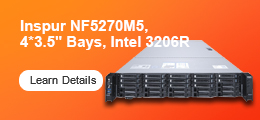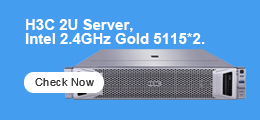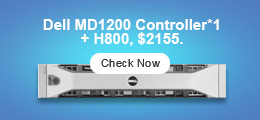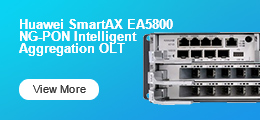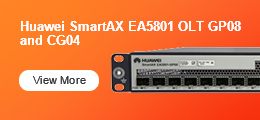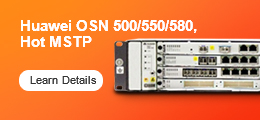The 4000 Series ISRs consolidate many must-have IT functions, including network, security, compute, storage, and unified communications. So you get everything you need in a single platform. That means significant savings in capital, operational, and management expenses for lower total cost of ownership. The platform is modular and upgradable, so you can add new services without changing equipment. It supports multiple application-aware services concurrently while maintaining WAN performance of up to 2 Gbps, even during heavy traffic loads. The backplane architecture supports high-bandwidth, module-to-module communication at speeds up to 10 Gbps.
The 4000 Series includes Cisco Trust Anchor Technologies that help mitigate modern cyberattacks by verifying platform integrity and providing protection from counterfeit and unauthorized modification of hardware and software.
The 4000 Series contains five platforms: the 4451, 4431, 4351, 4331, 4321 and 4221 ISRs.

Benefits of ISR 4000 Series
Easily grow your branch offices with these industry-leading router capabilities:
- Networking, services, computing, and storage integrated into a single form factor
- Consistent, gigabit performance while multiple services run concurrently
- Modular Cisco IOS XE Software, which quickly adapts to changing needs
- Integrated Cisco Intelligent WAN features, including application awareness, quality of service, and WAN optimization
- SDN-based automation of IWAN feature configuration with IWAN app
- Pervasive security with VPN options, threat defense services, and consistent policy enforcement
- Trust Anchor Technologies, protecting against modern cyberattacks, as well as counterfeit and unauthorized modification of hardware and software
- A range of WAN access connectivity options such as 4G LTE, T1/E1, T3/E3, xDSL, serial, and fiber Gigabit Ethernet Auto-configuration of Cisco Intelligent WAN features helps deliver software-defined widearea networking (SD WAN) to enterprise networks.
What are the differences among the six models of ISR 4000 Series? Cisco also updated the newest model comparison of ISR 4000 series. Let’s take a look.
The ISR 4000 Model Comparison
|
Feature |
4221(new) |
|
|
|
|
|
|
Form factor |
1 RU |
1 RU |
1 RU |
2 RU |
1 RU |
2 RU |
|
Integrated WAN ports |
GE / SFP |
GE / SFP |
GE / SFP |
2 PoE GE / SFP |
2 PoE GE / SFP |
2 PoE GE / SFP |
|
1 GE |
GE |
GE |
GE/ SFP |
2 GE / SFP |
2 GE / SFP |
|
|
SFP |
||||||
|
Performance |
35Mbps |
50 Mbps |
100 Mbps |
200 Mbps |
500 Mbps |
Gbps |
|
Upgradable to 75 Mbps |
Upgradable to 100 Mbps |
Upgradable to 300 Mbps |
Upgradable to 400 Mbps |
Upgradeable to 1 Gbps |
Upgradable to 2 Gbps |
|
|
Management port |
1 GE (Integrated Out of Band) |
|||||
|
Network Interface Modules (NIM) |
2 |
2 |
2 |
3 |
3 |
3 |
|
Enhanced Services Module (SM-X) |
N/A |
N/A |
single-wide |
2 single- or1 double-wide |
N/A |
2 single- or double-wide |
|
Integrated Services Card (ISC) slots |
N/A |
1 |
1 |
1 |
1 |
1 |
|
(PVDM 4) |
(PVDM 4) |
(PVDM 4) |
(PVDM 4) |
(PVDM 4) |
||
|
USB ports (type A) |
1 |
1 |
1 |
2 |
2 |
2 |
|
Default/max Flash |
8 GB |
4 GB / 8 GB |
4 GB / 16 GB |
4 GB / 16 GB |
8 GB / 32 GB |
8 GB / 32 GB |
|
Default/max DRAM |
4 GB |
4 GB / 8 GB |
4 GB / 16 GB |
4 GB / 16 GB |
4 GB / 16 GB |
4 GB / 16 GB |
|
Power supply type |
External: AC |
External: AC, PoE |
Internal: AC, PoE |
Internal: AC, PoE or DC |
Internal: AC, PoE or DC |
Internal: AC, PoE or DC |
|
Redundant power supply |
No |
No |
No |
No |
Yes |
Yes |
|
Internal RPS |
Internal RPS |
|||||
|
Module online insertion and removal (OIR) |
No |
Yes |
Yes |
Yes |
Yes |
Yes |
|
Server virtualization platform (UCS E-Series) and Network Compute Engine (NCE) |
N/A |
2-core single-wide, 2-core NCE |
2 core single-wide, 2-core NCE |
2-core single-wide, 2-core NCE |
||
|
4-core NCE |
4-core single-wide, 4-core NCE |
4 core single-wide, 4-core NCE |
4-core NCE |
4-core single-wide, 4-core NCE |
||
|
4 core double-wide, |
4-core double-wide, |
|||||
|
6 core double-wide, |
6-core double-wide, |
|||||
|
8 core double-wide |
8-core double-wide |
|||||
|
Advanced Security |
4221 |
4321 |
4331 |
4351 |
4431 |
4451 |
|
Zone-based firewall and NAT services |
VRF-Aware Firewall and Network Address Translation (NAT) |
|||||
|
Hardware VPN acceleration(DES, 3DES, AES) |
No |
|||||
|
IPSEC VPN services |
FlexVPN, Easy VPN remote server, Enhanced Easy VPN, Dynamic Multipoint VPN (DMVPN), |
|||||
|
Group Encrypted Transport VPN (GET VPN), V3PN, MPLS VPN |
||||||
|
SSL VPN |
No |
|||||
|
Intrusion prevention |
Yes (Snort for Singnature Based and FirePower as nGIPS) |
|||||
|
Anomaly Detection and Machine Learning |
Cisco Self Learning Networks (SLN) |
|||||
|
Network foundation protection |
ACL, FPM, control plan protection, control plane policing (CoPP), QoS, role-based CLI access, source-based RTBH, uRPF, SSHv2 |
|||||
|
Cisco Umbrella Branch Support |
Yes |
|||||
|
Cisco Cloud Web Security |
Yes |
|||||
|
Identity-based networking |
No |
No |
No |
No |
No |
No |
|
Cisco TrustSec |
Security Group Tag Exchange Protocol (SXP), SGT over GETVPN |
|||||
|
SGT over IPSEC |
||||||
|
SGT over DMVPN |
||||||
|
SGT-based ZBFW |
||||||
|
Port/Layer 3 interface/IP/subnet-to-SGT mapping |
||||||
|
SGT export in Flexible NetFlow |
||||||
|
Unified Communications |
4221 |
4321 |
4331 |
4351 |
4431 |
4451 |
|
Local conferencing |
N/A |
Yes |
Yes |
Yes |
Yes |
Yes |
|
Digital signal processor support |
N/A |
PVDM4 |
PVDM4 |
PVDM4 |
PVDM4 |
PVDM4 |
|
Cisco Unified Survivable Remote Site |
N/A |
Up to 50 |
Up to 100 |
Up to 750 |
Up to 1200 |
Up to 2000 |
|
Telephony support |
||||||
|
Cisco Unified Communications |
N/A |
Up to 50 |
Up to 100 |
Up to 250 |
Up to 350 |
Up to 450 |
|
Manager Express support |
||||||
|
Cisco Unity Express |
N/A |
Use Cisco Unity Connection on UCSE |
Use Cisco Unity Connection on UCSE |
Use Cisco Unity Connection on UCSE |
Use Cisco Unity Connection on UCSE |
Use Cisco Unity Connection on UCSE |
|
(NM, SM, or ISM) |
||||||
|
Cisco Unified Border Element (CUBE) |
N/A |
100 |
400 |
1000 |
3000 |
6000 |
|
(SIP/H.323 sessions) |
||||||
|
nano Cisco Unified Border Element (nanoCUBE) |
N/A |
N/A |
N/A |
N/A |
N/A |
N/A |
|
(sessions) |
||||||
|
Digital voice and video (T1/E1 channels) |
N/A |
Up to 240 |
Up to 360 |
Up to 720 |
Up to 720 |
Up to 1200 |
|
Analog/BRI voice |
N/A |
Up to 8 ports (FXS, FXO, E/M, BRi) |
Up to 12 ports (FXS, FXO, E/M, BRi) |
Up to 20 ports (FXS, FXO, E/M, BRi) |
Up to 12 ports (FXS, FXO, E/M, BRi) |
Up to 20 ports (FXS, FXO, E/M, BRi) |
|
Routing and Multicast |
4221 |
4321 |
4331 |
4351 |
4431 |
4451 |
|
IPv4 routing protocols |
RIP v1/v2, EIGRP, OSPF, BGP, PBR, PfR |
RIP v1/v2, EIGRP, OSPF, BGP, PBR, PfR |
RIP v1/v2, EIGRP, OSPF, BGP, PBR, PfR |
RIP v1/v2, EIGRP, OSPF, BGP, PBR, PfR |
RIP v1/v2, EIGRP, OSPF, BGP, PBR, PfR |
RIP v1/v2, EIGRP, OSPF, BGP, PBR, PfR |
|
Multicast routing protocols |
PIM-SM, mroute (static route), and MLD |
PIM-SM, mroute (static route), and MLD |
PIM-SM, mroute (static route), and MLD |
PIM-SM, mroute (static route), and MLD |
PIM-SM, mroute (static route), and MLD |
PIM-SM, mroute (static route), and MLD |
|
IPv6 routing protocols |
EIGRP, RIP, OSPFv3, IS-IS, |
EIGRP, RIP, OSPFv3, IS-IS, |
EIGRP, RIP, OSPFv3, IS-IS, |
EIGRP, RIP, OSPFv3, IS-IS, |
EIGRP, RIP, OSPFv3, IS-IS, |
EIGRP, RIP, OSPFv3, IS-IS, |
|
BGP and PBR |
BGP and PBR |
BGP and PBR |
BGP and PBR |
BGP and PBR |
BGP and PBR |
|
|
Wireless LAN |
4221 |
4321 |
4331 |
4351 |
4431 |
4451 |
|
Integrated 802.11 b/g/n access point |
N/A |
N/A |
N/A |
N/A |
N/A |
N/A |
|
Integrated 802.11 a/b/g/n access point |
N/A |
N/A |
N/A |
N/A |
N/A |
N/A |
|
Unified and autonomous mode |
N/A |
N/A |
N/A |
N/A |
N/A |
N/A |
|
RP-TNC connectors for field-replaceable |
N/A |
N/A |
N/A |
N/A |
N/A |
N/A |
|
optional high-gain antennas |
||||||
|
Diversity (dual antennas) |
N/A |
N/A |
N/A |
N/A |
N/A |
N/A |
|
Wireless LAN controller module |
N/A |
Available on UCS E-Series |
Available on UCS E-Series |
Available on UCS E-Series |
Available on UCS E-Series |
Available on UCS E-Series |
|
Wireless WAN |
4221 |
4321 |
4331 |
4351 |
4431 |
4451 |
|
3G /4G LTE cellular |
Yes |
|||||
|
Cat 6 LTE Advanced |
Yes† |
|||||
|
GPS Support |
Yes |
|||||
|
Indoor Antenna |
Yes (Various antenna using 2 x TNC connectors supporting MIMO) |
|||||
|
Outdoor antennas |
N/A |
N/A |
N/A |
N/A |
N/A |
N/A |
|
Integrated Switching |
4221 |
4321 |
4331 |
4351 |
4431 |
4451 |
|
Maximum switched Ethernet ports |
2 x 8 |
16 |
40 |
72 |
24 |
72 |
|
Maximum switched Ethernet LAN ports with PoE |
0 |
16 |
40 |
72 |
24 |
72 |
|
PoE support (wattage) |
N/A |
120 W |
250 W |
500 W |
250 W |
500 W |
|
without PoE boost |
(with optional power supply redundancy) |
|||||
|
PoE support (wattage) |
N/A |
260 W |
500 W |
950 W |
530 W |
990 W |
|
with PoE boost |
(no power supply redundancy) |
|||||
|
EtherSwitch Service Module type (width) |
N/A |
N/A |
single |
2 single or 1 double |
N/A |
2 single or 1 double |
|
Application Services |
4321 |
4331 |
4351 |
4431 |
4451 |
|
|
Intelligent Path Control |
PfR |
PfR |
PfR |
PfR |
PfR |
PfR |
|
Network Contention Control |
QoS, HQoS |
QoS, HQoS |
QoS, HQoS |
QoS, HQoS |
QoS, HQoS |
QoS, HQoS |
|
Application Visibility |
NBAR v2 |
NBAR v2 |
NBAR v2 |
NBAR v2 |
NBAR v2 |
NBAR v2 |
|
WAN Optimization |
N/A |
ISR-WAAS |
ISR-WAAS, |
ISR-WAAS, |
ISR-WAAS |
ISR-WAAS, |
|
vWAAS on UCS E-Series |
vWAAS on UCS E-Series |
vWAAS on UCS E-Series |
||||
|
Akamai Connect |
N/A |
Yes |
Yes |
Yes |
Yes |
Yes |
|
Cisco Application Centric Infrastructure |
Application Policy Infrastructure Controller (APIC) with Enterprise Module |
|||||
† With CAT6 LTE Advanced theoretical DL speed of 300 Mbps, with 2 NIM slots ISR4221 and ISR4321, customer may need the performance license to maximize CAT6 LTE Advanced theoretical full potential capability with 2 NIM CAT6 LTE Advanced slots depending on specific carrier SP provisioning capability & capacity.
More Topics about the ISR 4000




